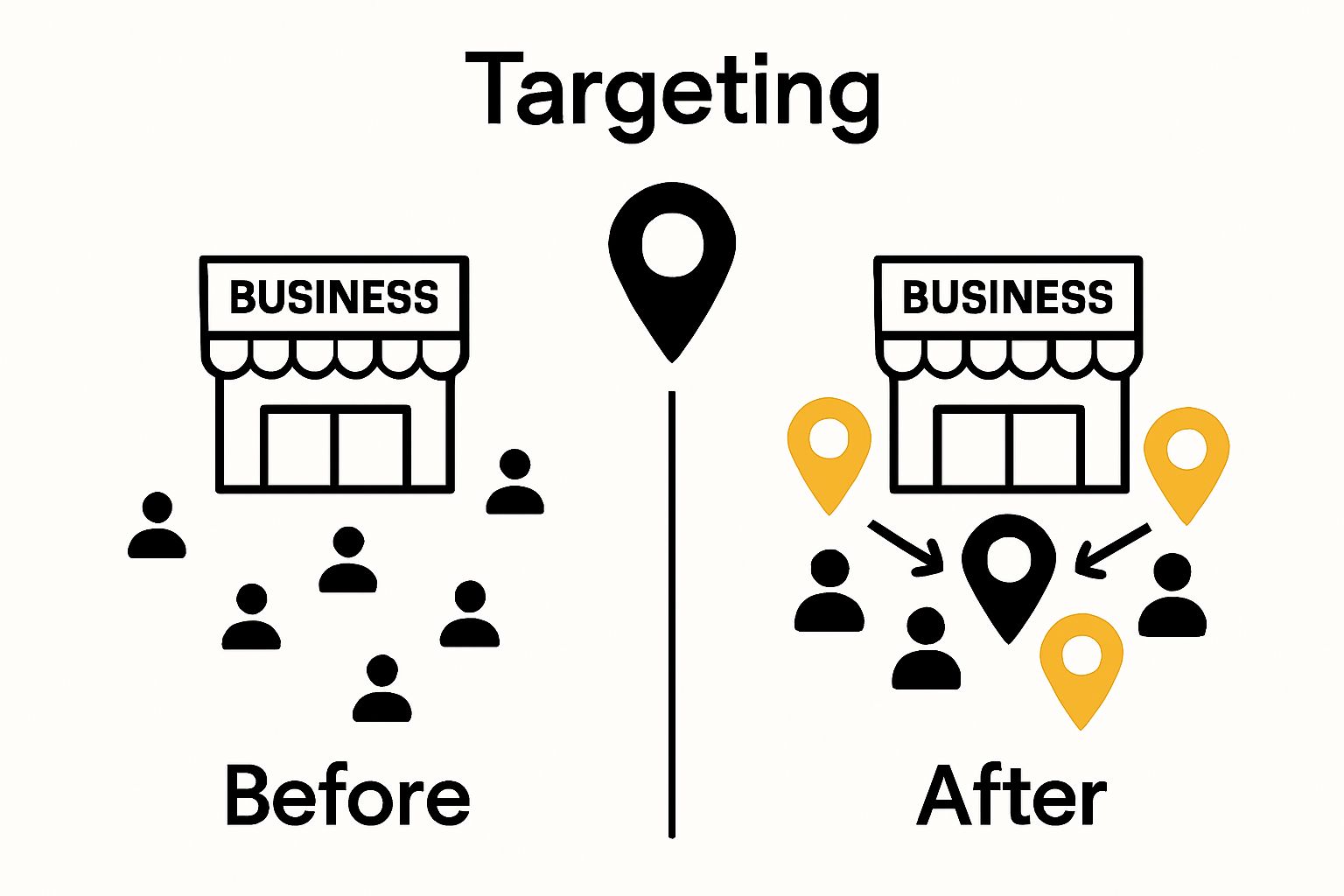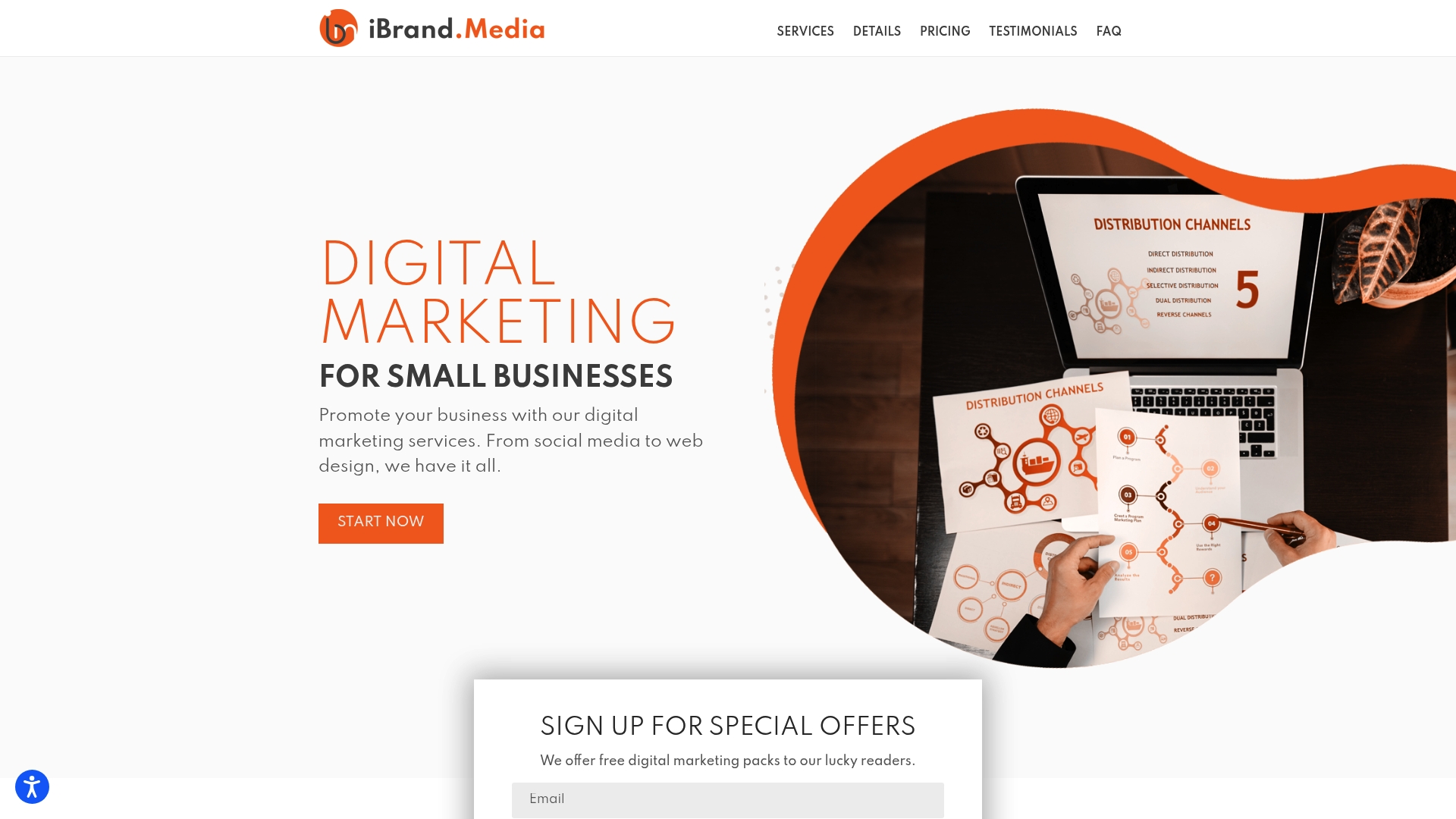Every business wants to stand out in their community, but knowing exactly how to reach local customers can feel overwhelming. Over 46 percent of all Google searches have local intent, yet most businesses miss dozens of tiny details that make a huge difference. The surprise is that the most effective local marketing strategies are usually the ones businesses ignore, and the real wins come from steps that rarely get discussed.
Table of Contents
- Step 1: Identify Your Local Market Needs
- Step 2: Optimize Your Online Presence For Local Search
- Step 3: Engage With Your Community On Social Media
- Step 4: Implement Local Seo Strategies
- Step 5: Measure And Adjust Your Marketing Efforts
Quick Summary
| Key Point | Explanation |
|---|---|
| 1. Understand local market needs | Conduct thorough research to identify your ideal local customer profile and their preferences. |
| 2. Optimize online presence for local search | Claim and complete your Google Business Profile and integrate local keywords on your website. |
| 3. Engage with the community on social media | Create content that highlights local events and interactions to build strong community connections. |
| 4. Implement local SEO strategies | Use location-specific keywords and create dedicated pages for different areas you serve. |
| 5. Measure and adjust marketing efforts | Regularly track performance metrics to refine your strategies based on community needs and engagement. |
Step 1: Identify Your Local Market Needs
Understanding your local market is the foundational step in creating an effective local targeting strategy. This process involves deep research and strategic analysis to uncover the specific needs, preferences, and behaviors of potential customers in your geographic area. Without a clear understanding of who your local audience is, your marketing efforts will likely miss the mark.
Begin by conducting comprehensive market research focused specifically on your local community. This means going beyond generic demographic data and diving into neighborhood-specific insights. Collect information through multiple channels such as local business associations, chamber of commerce reports, community surveys, and direct customer interactions. Pay close attention to local economic trends, population dynamics, and consumer spending patterns that could impact your business.
Learn more about creating a targeted marketing strategy by understanding the nuanced requirements of your specific market segment. Your research should help you develop a detailed profile of your ideal local customer, including their:
- Age ranges
- Income levels
- Specific neighborhood characteristics
- Typical purchasing behaviors
- Local lifestyle preferences
Utilize tools like Google Trends, social media analytics, and local government economic reports to gather precise data. Local Facebook groups, neighborhood forums, and community websites can provide invaluable qualitative insights that raw statistics might miss. For instance, a restaurant might discover that young professionals in a specific neighborhood prefer quick, healthy lunch options, while an HVAC business could learn about prevalent home age and maintenance needs.
Verify your market research by cross-referencing multiple sources and considering potential variations in customer segments. No single data point tells the complete story.
The following table summarizes essential local marketing tools and resources mentioned in the article, along with their purpose for targeting a local audience.
| Tool/Resource | Purpose |
|---|---|
| Google Trends | Analyze search trends and local interests |
| Social Media Analytics | Understand audience behavior and content engagement |
| Local Business Associations | Gather business and market insights |
| Chamber of Commerce Reports | Obtain economic trends and community information |
| Google Business Profile | Enhance online local visibility and provide details |
| Google Analytics | Track website traffic and user behavior |
| Local Government Reports | Access demographic and economic data |
 Look for consistent patterns and be prepared to adjust your understanding as you gather more information. The goal is to create a living, evolving understanding of your local market that allows you to craft highly targeted marketing messages and service offerings.
Look for consistent patterns and be prepared to adjust your understanding as you gather more information. The goal is to create a living, evolving understanding of your local market that allows you to craft highly targeted marketing messages and service offerings.
Successful local market identification means you can confidently answer questions like: Who are my most likely customers? What specific problems do they need solved? What communication channels will reach them most effectively? By dedicating time to this crucial first step, you set a strong foundation for all subsequent local marketing efforts.
Step 2: Optimize Your Online Presence for Local Search
Local search optimization transforms how potential customers discover your business online, ensuring you appear prominently when people search for services in your specific geographic area. This step is about making your digital footprint as visible and attractive as possible to local searchers.
Discover advanced local SEO techniques that can significantly boost your online visibility. Begin by claiming and thoroughly completing your Google Business Profile, which serves as your digital storefront. This means adding accurate business information including precise location, operating hours, contact details, and high-quality images that represent your brand authentically. Consistent and comprehensive information across all online platforms signals credibility to both search engines and potential customers.
Your website itself needs strategic local optimization. Integrate location-specific keywords naturally throughout your content, ensuring they flow smoothly within context. For example, instead of awkwardly stuffing “plumber in Chicago” repeatedly, craft sentences like “Our Chicago plumbing team specializes in rapid emergency repairs.” Create dedicated location pages if you serve multiple areas, providing unique content that highlights your connection to each community.
Key local search optimization elements include:
- Embedding a Google Maps location on your website
- Obtaining consistent local business citations
- Collecting and responding to customer reviews
- Using schema markup for local business information
- Creating locally relevant content
Review your website’s mobile responsiveness, as most local searches happen on smartphones.
 Google prioritizes mobile-friendly websites in local search results, so ensure your site loads quickly and displays correctly on various device sizes. Use tools like Google’s Mobile-Friendly Test to evaluate and improve your site’s performance.
Google prioritizes mobile-friendly websites in local search results, so ensure your site loads quickly and displays correctly on various device sizes. Use tools like Google’s Mobile-Friendly Test to evaluate and improve your site’s performance.
Verify your local search optimization by periodically checking your Google Business Profile insights, monitoring your local search rankings, and tracking website traffic from local searches. A successful optimization strategy will show increased visibility, more website visits from local customers, and potentially higher conversion rates.
This checklist table helps ensure your online presence is fully optimized for local search as described in the article.
| Optimization Task | Description | Completion Status |
|---|---|---|
| Claim Google Business Profile | Create or claim your verified profile | |
| Add Business Information | Ensure address, hours, and contact are accurate | |
| Use Location Keywords on Website | Integrate city/area names naturally in content | |
| Embed Google Maps | Display your business location on your website | |
| Create Dedicated Location Pages | Make custom pages if serving multiple areas | |
| Ensure Mobile Responsiveness | Site displays and works well on all devices | |
| Collect and Respond to Reviews | Build trust by managing customer feedback |
Step 3: Engage with Your Community on Social Media
Social media represents more than just a broadcasting platform – it is a dynamic space for genuine community connection and local audience engagement. Strategic social media interaction can transform passive followers into active community members and loyal customers who feel personally connected to your brand.
Learn advanced social media engagement strategies that go beyond simple posting. Focus on creating content that resonates with your local audience by highlighting community events, showcasing local team members, and sharing stories that demonstrate your business’s commitment to the neighborhood. This approach transforms your social media presence from a marketing tool into a community dialogue.
Choose social media platforms strategically based on where your specific local audience spends time. Facebook and Instagram often work well for visually-driven local businesses, while LinkedIn might serve professional service providers better. Consistency is key – develop a regular posting schedule that keeps your audience engaged without overwhelming them. Aim for a mix of informative content, behind-the-scenes glimpses, customer testimonials, and local community highlights.
Important social media engagement tactics include:
- Responding promptly to comments and messages
- Using location-specific hashtags
- Sharing user-generated content
- Hosting local-focused online events or contests
- Featuring customer stories and local success narratives
Encourage genuine interactions by asking questions, creating polls about local preferences, and showing authentic interest in your community’s experiences. For example, a local restaurant might ask followers about their favorite neighborhood lunch spots or share stories about local ingredient suppliers. This approach builds trust and positions your business as a community-invested brand rather than just another commercial entity.
Verify your social media engagement success by tracking metrics like engagement rate, comment quality, message response time, and community sentiment. A strong local social media strategy will demonstrate increased follower interaction, more meaningful conversations, and a growing sense of community around your brand. Remember that building genuine connections takes time – patience and authenticity are your most powerful tools in creating a thriving local social media presence.
Step 4: Implement Local SEO Strategies
Local SEO transforms how potential customers discover your business online, making your digital presence a powerful magnet for nearby clients. Strategic optimization means creating a robust digital footprint that speaks directly to local searchers, positioning your business as the go-to solution in your community.
Explore comprehensive local SEO techniques designed to elevate your online visibility. Start by meticulously optimizing your website with location-specific keywords that sound natural and authentic. This isn’t about cramming city names into every sentence, but thoughtfully integrating local language that resonates with your community. For instance, a plumbing business might reference specific neighborhood challenges or local building characteristics that demonstrate deep community understanding.
Create dedicated location pages if your business serves multiple areas, ensuring each page contains unique, relevant content. Locally targeted content should go beyond basic service descriptions, incorporating community-specific details, local landmarks, and region-specific challenges your business helps solve. This approach signals to search engines that you are a genuine, embedded part of the local ecosystem.
Critical local SEO elements to implement include:
- Obtaining consistent business citations across online directories
- Generating authentic local customer reviews
- Implementing structured data markup for local businesses
- Creating locally relevant content and blog posts
- Maintaining accurate contact and location information
Your website’s technical infrastructure matters immensely. Ensure your site is mobile-responsive, loads quickly, and provides a seamless user experience across all devices. Search engines prioritize websites that offer smooth navigation and fast loading times, especially for local searches conducted on smartphones. Use tools like Google’s PageSpeed Insights to evaluate and improve your website’s performance.
Verify your local SEO success by monitoring key metrics such as local search rankings, website traffic from local searches, and the number of location-based inquiries. A successful strategy will show increased visibility in local search results, more website visits from nearby potential customers, and a measurable boost in location-specific engagement. Remember that local SEO is an ongoing process requiring consistent attention and adaptation to changing digital landscapes.
Step 5: Measure and Adjust Your Marketing Efforts
Successful local marketing is not a static process, but a dynamic journey of continuous improvement. Measurement and adaptation are the cornerstones of understanding how your strategies resonate with your local audience and identifying opportunities for growth. This step transforms raw data into actionable insights that can dramatically enhance your marketing effectiveness.
Explore advanced marketing performance tracking methods that go beyond surface-level metrics. Start by establishing clear, measurable goals for your local marketing efforts. These might include increasing website traffic from local searches, improving conversion rates, boosting social media engagement, or generating more local customer inquiries. Each goal needs specific, trackable key performance indicators that provide concrete evidence of your marketing strategy’s impact.
Utilize a comprehensive suite of analytics tools to gather meaningful data. Google Analytics, Google Business Profile insights, and social media platform analytics offer granular information about your local audience’s behavior. Pay close attention to metrics that reveal not just numbers, but actual customer interactions. Look beyond simple view counts and dig into engagement rates, time spent on your website, click-through rates, and the quality of local leads generated.
Key performance metrics to track include:
- Conversion rates from local search traffic
- Number of local customer interactions
- Social media engagement from local followers
- Website traffic from local geographic regions
- Customer acquisition cost for local marketing channels
Regular review and analysis are crucial. Set a consistent schedule – monthly or quarterly – to deeply examine your marketing performance. This isn’t about making drastic changes with every minor fluctuation, but identifying meaningful trends that suggest where your strategy needs refinement. Be prepared to experiment, making incremental adjustments based on data-driven insights. For instance, if your social media posts about local community events generate significantly more engagement, consider increasing that type of content.
Verify your measurement process by ensuring you have a systematic approach to collecting, analyzing, and acting on data. Successful marketing adaptation means your strategies become increasingly precise and effective over time. Remember that measurement is not about achieving perfection, but about continuous learning and improvement. Your local marketing approach should be a living strategy that evolves alongside your community’s changing needs and preferences.
Ready to Unlock Real Growth With Local Marketing Experts?
Are you struggling to pinpoint your ideal local customers or frustrated by missed opportunities to stand out in local searches? If you found the steps in this article insightful but feel overwhelmed by the details of local SEO, online engagement, and continuous performance tracking, you are not alone. Many small businesses face the same confusion and worry that their brand is missing out on real, measurable local growth. It is tough when you need your business to be found in your neighborhood but do not know how to cut through the noise. That is where our experience and collaboration can make a difference. Explore more stories of local businesses finding success with our strategies in the Uncategorized | Ibrandmedia section.

Stop waiting for customers to come to you. Take the next step with a partner that understands local targets, data-driven tracking, and personal messaging. Visit ibrand.media to see how our team can personalize a plan for you right now, or browse more practical solutions over at Uncategorized | Ibrandmedia. Act today to turn local insights into loyal customers—your competitors will not wait.
Frequently Asked Questions
How can I identify the needs of my local market?
Understanding your local market involves conducting detailed market research that includes demographic analysis, local economic trends, community surveys, and feedback from direct customer interactions. Use tools like Google Trends and social media analytics to gather relevant insights.
What are some effective strategies for optimizing my online presence for local search?
To optimize your online presence, ensure your Google Business Profile is complete and accurate, incorporate location-specific keywords in your website content, create dedicated location pages, and maintain mobile responsiveness. Additionally, collect customer reviews and use schema markup to enhance local search visibility.
How can I engage my local community through social media?
Engage your local community by sharing content that resonates with local interests, hosting online events or contests, responding promptly to comments, and using location-based hashtags. Highlight local events and success stories to foster a sense of connection and trust within the community.
What key metrics should I track to measure the effectiveness of my local marketing efforts?
Key metrics to track include conversion rates from local search traffic, local customer interactions, engagement rates on social media, and website traffic from local sources. Regularly reviewing these metrics will help you refine your marketing strategies and adapt to your audience’s needs.
Recommended
- How to Run Local Ads: A Complete Guide for 2025 | Ibrandmedia
- Top Benefits of Local Advertising for Small Businesses in 2025 | Ibrandmedia
- How to Run Local Ads: A Complete Guide for 2025 | Ibrandmedia
- How to Run Social Ads: A 2025 Guide for Local Small Businesses | Ibrandmedia
- What Is Local SEO? A Comprehensive Guide to Boost Your Local Business Visibility

Recent Comments